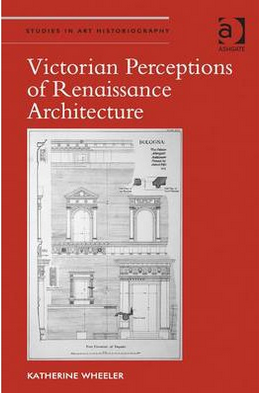
Victorian Perceptions of Renaissance Architecture
[Book Description]
In the mid-1880s The Builder, an influential British architectural journal, published an article characterizing Renaissance architecture as a corrupt bastardization of the classical architecture of Greece and Rome. By the turn of the century, however, the same journal praised the Renaissance architect Filippo Brunelleschi as the 'Christopher Columbus of modern architecture.' Victorian Perceptions of Renaissance Architecture, 1850-1914 examines these conflicting characterizations and reveals how the writing of architectural history was intimately tied to the rise of the professional architect and the formalization of architectural education in late nineteenth-century Britain. Drawing on a broad range of evidence, including literary texts, professional journals, university curricula, and census records, Victorian Perceptions reframes works by seminal authors such as John Ruskin, Walter Pater, John Addington Symonds, and Geoffrey Scott alongside those by architect-authors such as William J. Anderson and Reginald Blomfield within contemporary architectural debates.Relevant for architectural historians, as well as literary scholars and those in Victorian studies, Victorian Perceptions reassesses the history of Renaissance architecture within the formation of a modern, British architectural profession.
[Table of Contents]
List of Illustrations ix
Acknowledgments xi
Introduction 1 (18)
1 The Sins of the Renaissance: John Ruskin 19 (30)
and the Rise of the Professional Architect
2 Embracing Decadence: Walter Pater's and 49 (20)
John Addington Symonds's Renaissance
3 "It is Time to be Rational": William J. 69 (32)
Anderson's The Architecture of the
Renaissance in Italy
4 The Renaissance as an English Style: J. 101(24)
Alfred Gotch, Reginald Blomfield, and the
English Renaissance
5 Experiencing the Renaissance: Geoffrey 125(30)
Scott's The Architecture of Humanism
Conclusion 155(6)
Bibliography 161(24)
Index 185

 新书报道
新书报道